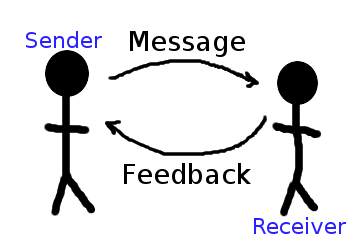VUSSC/Content/Tourism/Applying Effective Communication Skills/Targets of communication
In the wikipedia, communication is said to be deeply rooted in human behavior. http://en.wikipedia.org/wiki/Communication
As we have discovered, communication occurs through various means - verbal and non-verbal. However, it also can be to individuals or groups.
There are many targets or persons or entities with whom we communicate. The following is a classification of the groups with whom we can engage in communication.
1. Interpersonal communication - ocurs between small groups or large groups of people. There must be a sender and a receiver(s) .
- Small group-it is usually accepted that involves three to twelve persons.
- Large group - usually more than a small group but less than a population. In speaking of a large group, though, it is to a generic group of people sharing the same purpose.
For small or large groups, communication can be through a speech, by paraphrasing, or some form of non-verbal communication. The tour guide is seeking to send information to small or large groups of people and receive feedback.
2. Intra-personal communication - usually this is an overlooked target for communication. Intra-personal communiation is when the individual "speaks" to himself. For tour guiding, this will be the pre-presentation state, when the tour guide shares his/her own thoughts or words with self.
3. Mass communication - refers to when huge numbers are involved; it involves trying to communicate to large populations all at once. In this medium, we are usually referring to sending information to people who will not be able to give direct or immediate feedback. An example of Mass communication is what occurs via the television, when the Government of a country or an organization wishes to send information to the populace.
